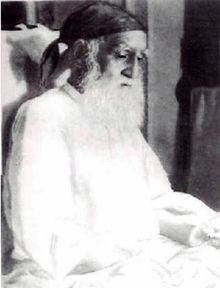Related Research Articles

The Chishtī Order is a tariqa, an order or school within the mystic Sufi tradition of Sunni Islam. The Chishti Order is known for its emphasis on love, tolerance, and openness. It began with Abu Ishaq Shami in Chisht, a small town near Herat, Afghanistan about 930 AD.
Khwaja Ghulam Farid or Khwaja Fareed (1845–1901) was a 19th-century Sufi poet from Punjab. He was a member of the Chishti Nizami Sufi order.

Muhammad Nizamuddin Auliya, also known as Hazrat Nizamuddin, and Mahbub-e-Ilahi was an Indian Sunni Muslim scholar, Sufi saint of the Chishti Order, and is one of the most famous Sufis from the Indian Subcontinent. His predecessors were Fariduddin Ganjshakar, Qutbuddin Bakhtiyar Kaki, and Moinuddin Chishti, who were the masters of the Chishti spiritual chain or silsila in the Indian subcontinent.

Chishtī Muʿīn al-Dīn Ḥasan Sijzī, known more commonly as Muʿīn al-Dīn Chishtī or Moinuddin Chishti, or by the epithet Gharib Nawaz, or reverently as a Shaykh Muʿīn al-Dīn or Muʿīn al-Dīn or Khwājā Muʿīn al-Dīn by Muslims of the Indian subcontinent, was a Persian Sunni Muslim preacher and Sayyid, ascetic, religious scholar, philosopher and mystic from Sistan, who eventually ended up settling in the Indian subcontinent in the early 13th-century, where he promulgated the famous Chishtiyya order of Sunni mysticism. This particular tariqa (order) became the dominant Muslim spiritual group in medieval India and many of the most beloved and venerated Indian Sunni saints were Chishti in their affiliation, including Nizamuddin Awliya and Amir Khusrow.

The Qadiriyya are members of the Sunni Qadiri tariqa. The tariqa got its name from Abdul Qadir Gilani, who was a Hanbali scholar from Gilan, Iran. The order relies strongly upon adherence to the fundamentals of Sunni Islamic law.

Farīduddīn Masūd Ganjshakar, commonly known as Bābā Farīd or Shaikh Farīd, was a 13th-century Sunni Muslim preacher, poet and mystic living in the Punjab region of the Indian Subcontinent. He is among the most esteemed Muslim mystics of the medieval period, and is revered by Muslims, Hindus and Sikhs alike.

Quṭb al-Aqṭāb Khwājā Sayyid Muḥammad Bakhtiyār al-Ḥusaynī, Quṭb al-Dīn Bakhtiyār Kākī was a Sunni Muslim Sufi mystic, saint and scholar of the Chishti Order from Delhi, India. He was the disciple and the spiritual successor of Mu'in al-Din Chishti as head of the Chishti order, and the person to whom the Qutb Minar, Delhi is dedicated. Before him the Chishti order in India was confined to Ajmer and Nagaur. He played a major role in establishing the order securely in Delhi. His dargah located adjacent to Zafar Mahal in Mehrauli, and the oldest dargah in Delhi, is also the venue of his annual Urs festivities. The Urs was held in high regard by many rulers of Delhi like Qutb ud-Din Aibak, Iltutmish who built a nearby stepwell, Gandhak ki Baoli for him, Sher Shah Suri who built a grand gateway, Bahadur Shah I who built the Moti Masjid mosque nearby and Farrukhsiyar who added a marble screen and a mosque.

Muhammad bin Yusuf Al-Hussaini, commonly known as Banda Nawaz Gaisu Daraz, was a Hanafi Maturidi scholar and Sufi saint from India of the Chishti Order.
Chishti or Chishty is a toponymic surname (nisba) from Chisht in Afghanistan. It is used by people claiming ancestry from Moinuddin Chishti or association with his Chishti Order of Sufism.

Nasiruddin Mahmud Chirag-Dehlavi was a 14th-century mystic-poet and a Sufi saint of the Chishti Order. He was a disciple of Sufi saint Nizamuddin Auliya, and later his successor. He was the last important Sufi of the Chishti Order from Delhi.

Pir Syed Meher Ali Shah Hanfi Qadri Chisti ؓ, was a Sufi, a great scholar and a mystic Punjabi poet from Punjab, British India belonging to the Chishti order. He is known as a Hanafi scholar who led the anti-Ahmadiyya movement. He wrote several books, most notably Saif e Chishtiyai, a polemical work criticizing the Ahmadiyya movement of Mirza Ghulam Ahmad.

Sufism has a history in India evolving for over 1,000 years. The presence of Sufism has been a leading entity increasing the reaches of Islam throughout South Asia. Following the entrance of Islam in the early 8th century, Sufi mystic traditions became more visible during the 10th and 11th centuries of the Delhi Sultanate and after it to the rest of India. A conglomeration of four chronologically separate dynasties, the early Delhi Sultanate consisted of rulers from Turkic and Afghan lands. This Persian influence flooded South Asia with Islam, Sufi thought, syncretic values, literature, education, and entertainment that has created an enduring impact on the presence of Islam in India today. Sufi preachers, merchants and missionaries also settled in coastal Gujarat through maritime voyages and trade.
Shaukat Ali, also known as Shaukat Ali Khan, was a Pakistani folk singer.
A Shaheed Shrine is a building constructed to commemorate and show respect to a saint and forms part of Punjabi folk religion in the Punjab region.
Qazi Mazhar Qayyum 'Raees-Azam Naushera', is a Pakistani politician. He came from a qadi's family that had been prominent among the landed aristocracy of the Soon Valley since the 16th century.

Hazrat Mawlana Pir Fazal Ali Shah Qureshi was an Islamic scholar and the leading Naqshbandi Shaikh of colonial India in the early twentieth century. He was born to Murad Ali Shah in 1270 AH in Daud Khel, Punjab, and died at 84 in the first night of Ramadan 1354 AH and was buried at Miskeenpur shareef, district Muzaffargarh, Punjab.
Shah Abdur Rahim was an Islamic scholar and a writer who assisted in the compilation of Fatawa-e-Alamgiri, the voluminous code of Islamic law. He was the father of the Muslim philosopher Shah Waliullah Dehlawi. He became a disciple of Khwaja Khurd son of Khawaja Baqi billah a revered Sufi of Delhi. He established Madrasa Rahimiyya in Delhi, a theological college which later played a part in the religious emancipation of Muslim India and became the breeding ground of religious reformers and mujahideen like Shah Waliullah and Shah Abdul Aziz.

Badar uz Zaman is a classical musician of Pakistan. He contributes to Pakistani Classical Music by promoting and re-interpreting compositions of the sub-continent's Muslim composers. Zaman performs with his brother, Ustad Qamar-uz-Zaman, carrying forward the Pakistan's own "Kasur Gharana" traditions of the art of Khayal music. Classical singers typically represent Indian Gharanas of Music.

Syed Ahmad Sultan, popularly known as Sakhi Sarwar, was a 12th-century Sufi saint of the Punjab region.
Punjabi Muslims are adherents of Islam who identify linguistically, culturally, and genealogically as Punjabis. Primarily geographically native to the Punjab province of Pakistan today, many have ancestry in the entire Punjab region, split between India and Pakistan in the contemporary era.
References
- 1 2 Sudarshana Srinivasan (22 August 2015). "An afternoon with the saints". The Hindu (newspaper). Retrieved 3 December 2021.
- 1 2 3 4 "Sufis and the Spread of Islam". Story of Pakistan website. 28 April 2012. Archived from the original on 6 August 2014. Retrieved 3 December 2021.
- ↑ Masood Lohar (5 October 2004). "Saint revered by people of all religions". Dawn (newspaper). Retrieved 4 December 2021.